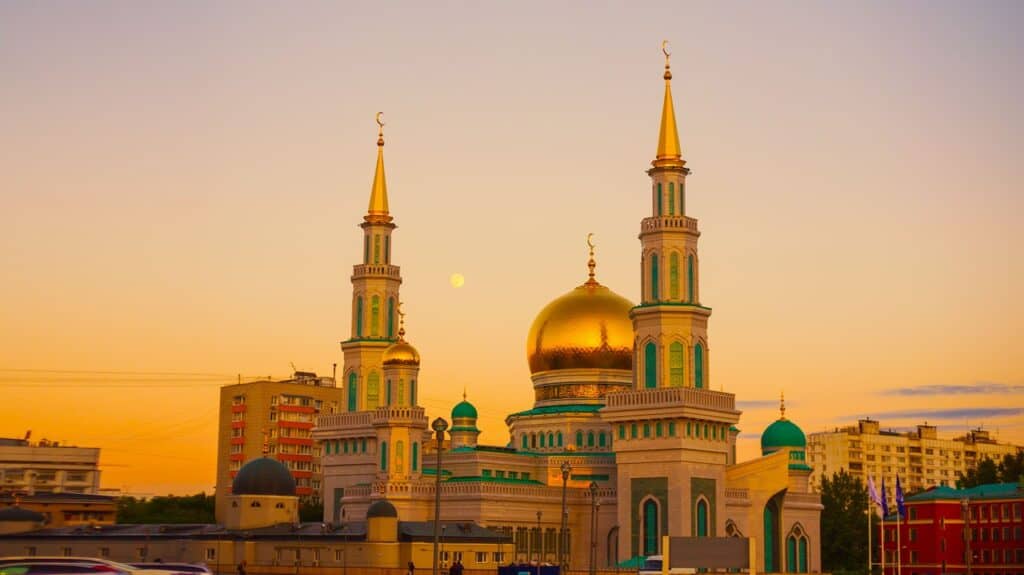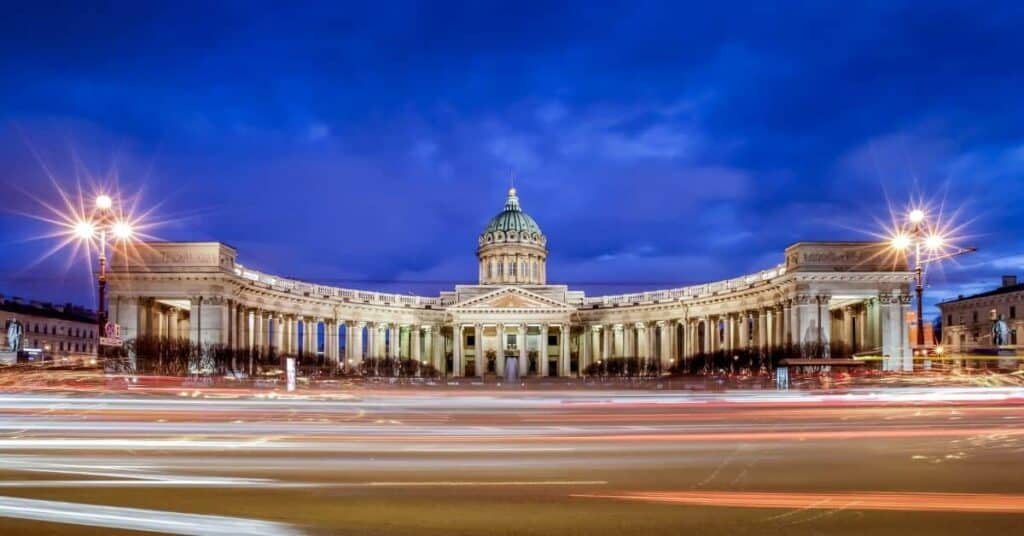Top Attractions in Moscow
Introduction: Politics, Performance Art and Pelmeni (Pastry Dumplings)
Moscow. A name once muttered in fear and spluttered in anger by American diplomats. This city once thumped as the red heart of the Soviet Union. It exerted political power over the majority of eastern Europe.
You will find that Moscow, like its other capital city, has wealth of culture and history. There is an awful lot of top things to do in Moscow, and this article will take you through as many as possible.
Its storied history as the Russian capital certainly has its peaks and troughs.
From the inefficiently organized (but delightfully decadent) Tsars like the Romanovs. Also through the revolutionary fervor of Lenin’s governmental overthrow. Not to mention, the sometimes brutal but sometimes uplifting highs and lows of the Soviet Union. And all through the current state of the Russian state – Moscow has seen it all.
This city has weathered some of the most dramatic socio-economic shifts. Changes of any nexus of a country’s political power that the world has ever seen.
Despite this near-constant upheaval, Moscow’s spirit has remained.
The troubled history of the Kremlin and the Red Square. The city’s foundational point, is very apparent as you walk Moscow’s streets. You will see statues and plinths that have been partially or totally torn asunder. The relics of communist Russia ferreted away into museums or exhibits.
The bold, functional, and surprisingly ornate Soviet architecture mixes and mismatches with the more traditional and decadent design sensibilities of the Russian Tsars and nobility. Landmark projects that were considered “showpieces” run atop the city and below its streets. Sprawling underground system designed by a fervently loyal and dedicated populous of workers.
So, with this staggering quantity of different activities you can undertake in the Russian capital, how on earth do you answer the question of “What to do in Moscow”?
Simple. Read on.
In this travel guide, we will first take you through a multitude of incredible historical landmarks. Beautifully throughout Moscow, recommending certain places to travel through.
Finally, we will walk you through what we all know to really be the best things to do in Moscow. How and where you can eat best in this city. The food in Russia is rich, sumptuous, and hearty. This guide is dedicated to finding you the best ways to explore the city’s rich culinary tapestry. If you want to discover all these aspects of Russia’s beating, capital heart, then read on below as we prepare you to travel the city’s storied streets.
Spheres of Influence and Domes of Divinity: Historical Landmarks of Moscow
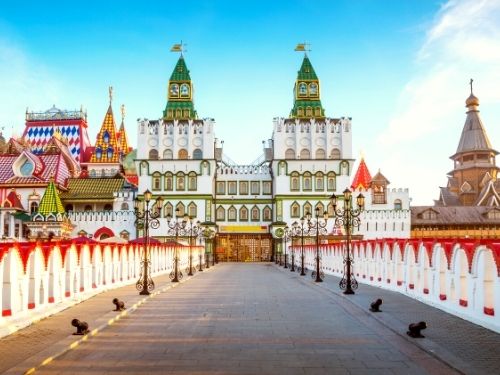
Two different global spheres of power and dominion spread from Moscow since its founding in the 18th Century. Tsardoms and Stalinist Russia both spread from this original capital city, and despite a brief dalliance with St Petersburg Russia’s rulers have prized the place dearly.
This next section will outline some towering landmarks of these different realms of history, taking you through Orthodox Christian cathedrals through to museums and artifacts of Soviet Russia.
We will walk you through the best things to do in Moscow if you are a lover of beautiful buildings and relics of history.
Purest Authority: Visiting the Kremlin
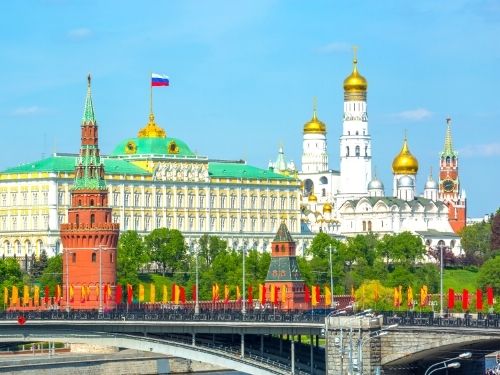
First up, we have the base of operations for several global powers, The Kremlin.
Founded in the 13th century as the official seat of power in Russia. The Kremlin was home to the vested authority of the Tsars up until Peter the Great, who transferred his authority to the unsurprisingly named “St Petersburg.” The Kremlin has since been restored as the center of Russian power.
The Kremlin has been around an awful lot longer, however. It first pops up in history in the 1147 document “The Hypatia Chronicle” as the castle of the Prince of Suzdal.
Since then, it has been constructed by various Italian and Russian master architects. A few of the litany of churches in the “Cathedral Square” is incredibly important to the Russian Orthodox Catholic religion. Many are considered protected UNESCO buildings.
Check out fantastic tours around Red Square.
It takes you through the Kremlin Cathedrals of the Assumption, The Annunciation, and the Archangel Michael. It also journeys through Napoleon’s Armory, The Grand Tsar Bell, and the tower of Ivan the Terrible.
Divinity and Domes: The Cathedral of St Basil
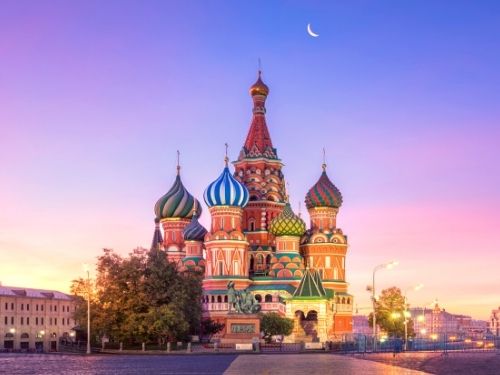
See the many tours around St. Basil’s Cathedral.
St Basil Cathedral, standing tall in onion-shaped magnificence, towers above the architecture of the Red Square. This bizarrely shaped, squat yet intimidating stature reminds of its creator: Ivan the Terrible. Also, referred to in hushed tones as “the Darkness” or “The Terror.” This head of a warring empire started building the Cathedral in 1555.
Built-in honor of Ivan’s military prowess by one of the many combatants he bested. And still marks the military superiority of that regime. In a sense, it commemorates the war-torn past of Russia as a state, and to an extent, its current military leaning.
The tours below take you inside the onion-like place of worship. You can marvel at the Russian art that adorns its spherical walls.
Interestingly, the tour also takes you past the Lenin museum in Red Square. Then goes surprisingly in-depth about the former Soviet Premier’s life, death, and rule as the first of Russia’s Marxist leaders.
All in all, the tours contain a comprehensive look at what to do in Red Square, Moscow.
The Lenin Mausoleum
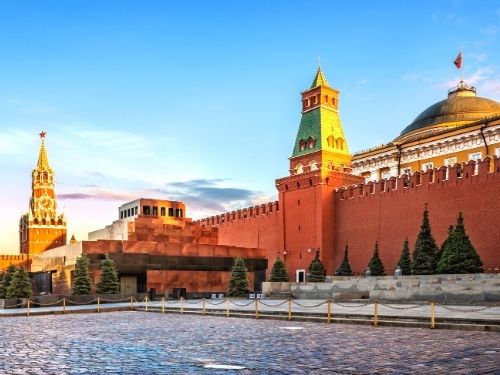
Lenin is undoubtedly a controversial figure within Russian history. Some see him as the instigator of a semi-global movement that lifted millions out of poverty, famine, and poor working conditions. Others see him as the beginning of a harsh regime of repression, censorship, and denial of certain freedoms.
However, you may see him, there is absolutely no denying that he is an important figure within Russian history.
If you want to revisit the legacy of Lenin as the initiator of the Soviet Union, then these tours will definitely be worth going to.
The tour walks you through the Soviet leftovers that remain in Moscow, paying particular attention to the legacy and impact of Lenin’s career on the following century of Russian history. The tour ends by reviewing the 50 massive pavilions representing the different Soviets that operated within the USSR’s republic.
The Moscow Metro
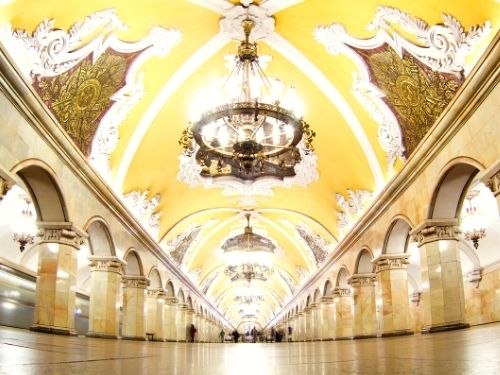
During its time as the USSR, Russia liked to provide landmarks that demonstrated its politico-economic development.
These landmarks would often be massive overarching projects that would stand for generations to come as amazing feats of engineering and technical prowess.
One of those is Magnitogorsk, the gleaming city of steel. This project was a sprawling metropolis steelwork that powered the Russian war engine throughout the second world war.
Another, and perhaps a more famous, example comes in the form of the Moscow Metro. This was a grand labyrinth underneath the city built entirely by the hands of everyday people from Moscow.
A feat of incredible design, people power, and collective action, it is a true world wonder that you can walk through for hours and wonder at the majesty of it all.
Time to Mos-Chow Down: What and Where to Eat in the Russian Capital
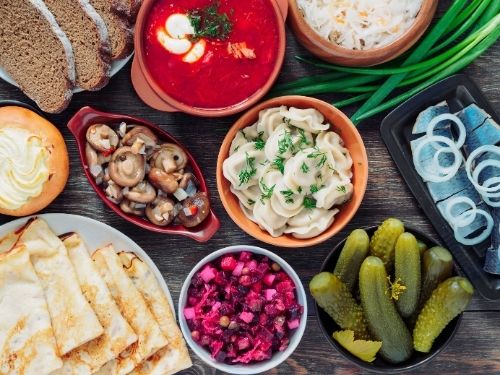
Now we get to the exciting part: the food.
Russian gastronomy is defined by an abundance of ingredients, and homely, bold flavors. Among these standout dishes are blinis, crepe-like pancakes often served folded around cheese, mushroom, and fish. There is also the national dish of Russia, the polemic.
This is a gorgeous fish dumpling dish that is often frozen first and then brought to a boil in a pot.
There is also the mighty Borscht, an elegant but hearty Ukrainian beetroot soup that is now equally popular in Russia.
It is the simple, beautiful flavors that come from dishes like this that really makes Russian cuisine stand out as a robust and delicate balance of flavors and textures.
There are several options for you if you want to enjoy authentic Russian cuisine outside of just trawling through restaurants.
There is an in-person cooking class that involves a tour of a local Moscow market. In it, you learn traditional cooking techniques and what Russians would find in their normal market – a great way of getting to grips with authentic Russian cuisine.
There are also food tours promising knowledgeable locals who can also give your insight on your visit to the Russian Capital.
